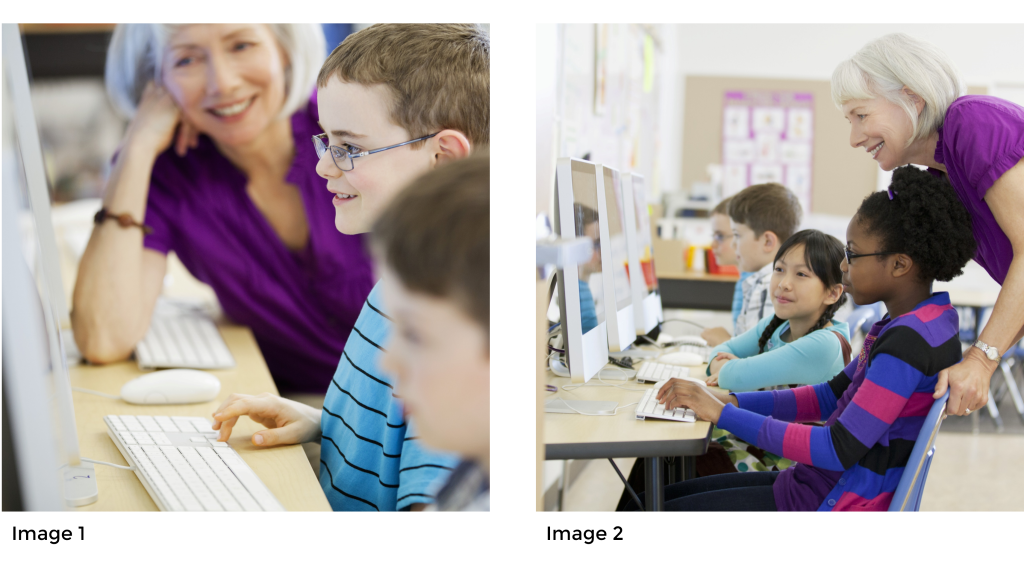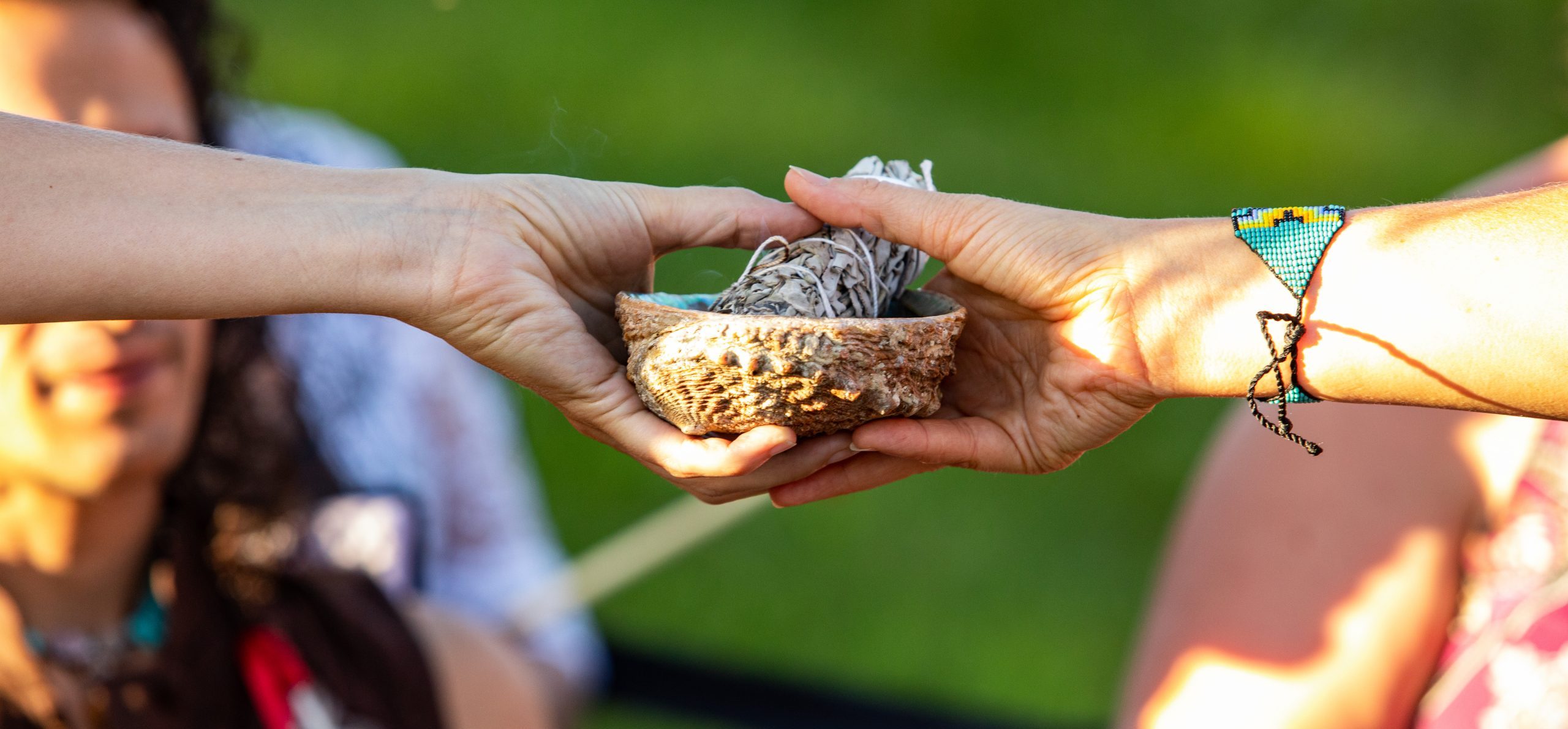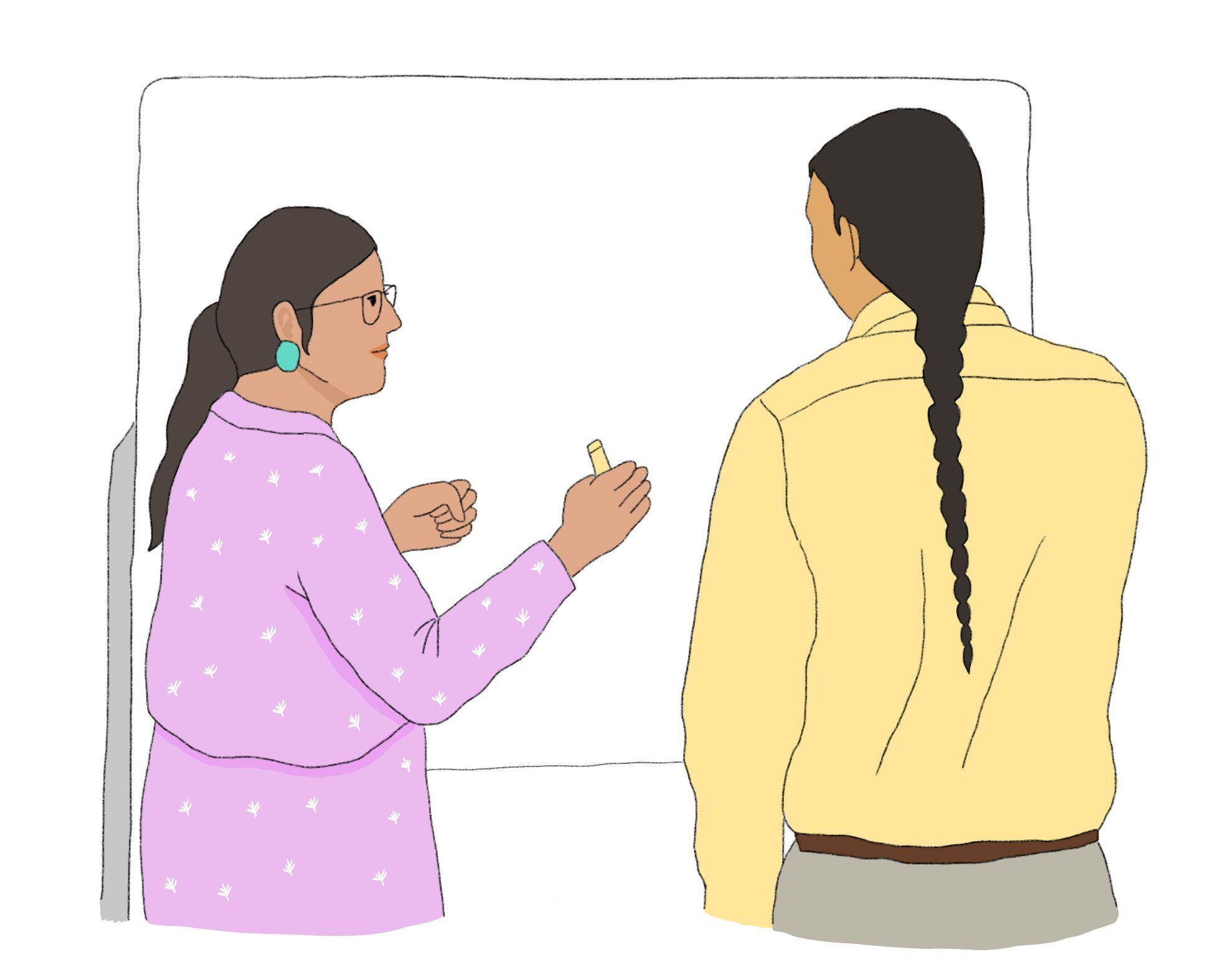Module 3: Assessment Strategies for a Virtual Environment
Culturally Responsive Assessments
Assessment is subjugated by a Western worldview…much of the mainstream culture-infused, linguistic-laden practices of assessment disadvantage Indigenous students.
– Preston & Claypool[1]
Traditional assessments tend to reinforce a linear, hierarchical, objective-oriented Western world view, rewarding memorization of facts that align with colonial, white-supremacist histories while misrepresenting, overlooking or erasing the histories, genres and rhetorical approaches associated with Black people, Indigenous Peoples, and People of Colour (BIPOC).[2]

Source: “Group of people connection digital device concept” by Rawpixel.com from Adobe Stock free assets license
Our own biases and assumptions about learning are communicated directly and indirectly through our assessment design. While we might assume that we are clearly communicating instructions, deadlines and achievement standards to learners, we actually may be excluding, or “othering,” students who are racialized, students from non-Western cultures, and/or students with language-proficiency challenges. As a result of these assumptions, learners may feel confused by unclear expectations, overwhelmed by the task and not set up for success.
Culturally Unresponsive Assessment Design
Here are some examples of assessments that are culturally unresponsive because they do not consider learners’ identities, backgrounds and experiences.
Select a topic below, marked with an arrowhead, to reveal more information.
Example 1:
A math test with lengthy instructions that require students to interpret complex linguistic features.
Why is this assessment not inclusive?
In this test, students’ language proficiency is being assessed, not their math skills, which will disadvantage students whose main language is not English.[3]
Example 2:
A timed online sociology quiz for a class of young adults where the responses depend on students’ recognizing pop culture celebrities from the UK.
Why is this assessment not inclusive?
The design of this quiz indicates conscious or unconscious bias on the part of the designer, who made assumptions about the age of students without taking into account their cultural background, interests and access to technology.
Example 3:
An online quiz requires students to download the free trial of an interactive video polling tool. The tool requires heavy use of bandwidth. They will end up paying a small monthly fee for access if they forget to cancel the free trial.
Why is this assessment not inclusive?
This quiz presupposes that learners live in parts of the world with easy access to affordable internet. Since some apps require users to provide a credit card number for free trials, requiring students to purchase this app to complete a quiz is not only unresponsive to learner needs, but it potentially violates accessibility policies at the educational institution.
Example 4:
An online assignment that requires all students to watch a documentary featuring a traumatic historical event such as genocide. The task is assigned with little explanation or context, no trigger warnings and little opportunity for discussion on nuance and stories of triumph and success.
Why is this assessment not inclusive?
This assessment is potentially harmful to learners. It can cause long-term systemic harm if all learners are not encouraged to use a social justice or anti-colonial lens while analyzing the documentary. Students whose identity aligns with the victims could be retraumatized, without an opportunity to share stories of strength, joy and success. When learners are deprived of context and opportunities for critical analysis and discussion using an anti-racist lens, biases and assumptions could go unchecked over time, thus reinforcing existing racial biases and promoting inequitable, oppressive institutional systems.

Tip: One of the most effective ways to remove barriers to traditional assessments is to design culturally responsive assessment practices. Assessments are culturally responsive when they:
- make learning meaningful and help students think about their learning
- foster cultural competence
- promote socio-political consciousness[4]
In culturally responsive assessment, rote memorization is discouraged in favour of interactive and authentic opportunities to collaborate with others, encouraging students to contribute to the community through meaningful and intentional action.
Examples of culturally responsive online assessments could include petitions, social media campaigns, podcasts and charitable events, provided that they foster belongingness through community building and identity sharing.
Integrating online assessment practices that prioritize human experience and individual learning can foster inclusive learning environments and encourage learners to create their own transformative learning experiences. Furthermore, equitable and inclusive assessment design can help to dismantle systemic inequities caused by racism, bias and discrimination.
– Jessie Stommel[5]
Integrating Inclusion and Belonging into Assessments

Designing culturally inclusive learning experiences has the power to validate learner identities and empower learners to interact meaningfully with ways of understanding via transcultural and translingual lenses.
Students who see themselves represented in assessment design and delivery are more likely to feel valued and engaged in the learning experience.
For example, people represented in images, scenarios and examples in assessments will impact the extent to which a student feels as if they belong.
When designing assessments, seek out images that represent a variety of racial and ethnic identities, sexual orientations, gender identities and abilities.

Source: Adaptation of “Image 1: Elementary students learning on computers” and “Image 2: Teacher assisting students in computer lab” by Hero Images from Adobe Stock free assets license
High-quality online assessment design is evidenced by tasks that respect and prioritize the identity of all learners, incorporating learner choice and encouraging students to participate in the construction of assessment design (i.e., selecting topics, selecting resources and submitting in modalities of their choice).
An assessment that responds to the cultures, interests, preferences and practical goals of students is more likely to lead to student success.
Learners feel connected to an assignment when they see themselves represented in it. This gives them the chance to reflect on their development as they go. For instance, students can be assessed on social justice topics through collaborative tasks suitable for a variety of disciplines.

Examples include:
- creating and promoting letter-writing campaigns to world leaders on the rights of girls and women (Public Relations, Gender Studies)
- developing outreach strategies for community gardens (Sustainability, Social and Community Services)
- creating and publishing a podcast to celebrate the successes of business owners with disabilities in the local community (Business Marketing)
Assessments that Incorporate Indigenous World Views and Pedagogies
All students deserve a quality education, one that benefits from the contributions of the original peoples on the land they now call home.
– Jean-Paul Restoule[6]
Understanding Indigenous perspectives is essential to a high-quality post-secondary educational experience in Ontario. For one, “an Indigenous education is an environmental education. It behooves us to know Indigenous knowledge and educations in order to live well and live sustainability with our planet.”[7]

Non-Indigenous educators who are unfamiliar with Indigenous ways of knowing and relating to others should not feel discouraged from seeking opportunities to learn how to integrate Indigenous perspectives into their assessment practices. Not only would Indigenous students feel included and see themselves represented in Indigenous-inspired learning activities and assessments, but non-Indigenous students would develop cultural competence by exploring other world views and challenging their own biases and ideologies.
To develop assessments that are culturally relevant to Indigenous peoples, non-Indigenous educators are encouraged to identify areas for further growth and opportunities for all students to engage with Indigenous ways of being, knowing and doing.
For instance, build your understanding of Indigenous histories and perspectives by seeking out free and accessible educational resources such as the University of Toronto’s Indigenous Education self-directed online modules. Consider how the common cultural and philosophical themes among multiple Indigenous world views might inform your practice.[8]
Keep in mind that there is no singular Indigenous perspective. Build relationships with Indigenous students, colleagues, advisors and community members. Deepen your understanding of the complex and diverse approaches to working within — and finding ways to work against — a colonized post-secondary educational system.
Here are some concepts to keep in mind while designing assessments that will help us deepen our understanding in Indigenous ways of knowing.[9]
Select a topic below, marked with an arrowhead, to reveal more information.
Holistic
Measuring knowledge should be a holistic endeavor that values reflection and oral discussion.
Relational
We are interconnected. Building strong relationships is essential to good learning and a good life.
Shared Knowledge
We co-construct new knowledge by sharing knowledge and respecting the knowledge of those who came before.
Storytelling
Our understanding of the world depends upon Indigenous perspectives.
Social and Ecological Justice
Principles of sustainability and human rights are inherently connected to the knowledge of Indigenous peoples and the oppression they experienced and continue to experience.
From a holistic Indigenous standpoint, education is about gaining life skills; it is about communicative interactions, social relationships, self-discovery, and self-growth. In turn, assessment and self-assessment need to focus on the diversity of learning; the whole learning experience.
– Preston & Claypool[10]
Online Assessment Design Strategies That Support Indigenous Students
Designing online assessments that incorporate Indigenous perspectives, world views and pedagogies is a way of respecting the identities of Indigenous students, but it also supports all learners in engaging with Indigenous ways of learning in meaningful, more inclusive ways.
- Encourage storytelling, especially digital storytelling through video, podcasts, graphic arts, and conversation.
- Promote good relations through collaborative tasks that encourage community building and respect for individual differences.
- Design simulations and scenarios that promote deep discussion on the human experience as they relate to history, social justice and the environment.
- Encourage plurilingual and translingual opportunities through assessment.[11]
- Encourage private practice before public performance.[12]
- Invite emotional response through reflection (i.e., portfolios).
- Facilitate knowledge sharing circles.[13] Details will be provided later in the module.
- Promote ungrading, reflection and self-grading.[14] Details will be provided later in the module.

If you are unfamiliar with Indigenous perspectives on teaching and learning, find out if your institution offers curriculum development support with Indigenous advisors. Reach out and get to know your Indigenous colleagues. Share your willingness to self-educate, and commit to supporting decolonizing your curriculum by incorporating Indigenous ways of knowing into assessment design.
Be mindful that Indigenous students shouldn’t have to be the only educators in a post-secondary space. We all are responsible for self-educating and should avoid traumatizing students by leaning on them to educate us, especially if they have not disclosed their identities to the group.
When educational curricula and pedagogy are imbued with Indigenous knowledge and ways of knowing, Indigenous student learning improves.
– Preston & Claypool[15]
Moving towards Alternative Assessments
Consider how we might move away from traditional assessment design that favours Western perspectives.
We can integrate alternative assessments into our practice when we self-educate on students’ backgrounds and cultures. We can build our own cultural competence first by learning about students — who they are, what they are passionate about, and what their goals are.
Then, we can seek out local and global initiatives that inspire students to share their ways of being, knowing and doing with each other and with us.
Activity: Culturally Relevant Assessment
You will be presented with two scenarios that apply a traditional assessment. Read through each traditional assessment and ask yourself:
- Why is the assessment not culturally inclusive?
- How can the assessment incorporate a culturally responsive alternative assessment?
Use the documentation tool below to record your answers.
Once you have recorded your answers. Take a look at the suggested answers that include a culturally responsive example and its corresponding lesson planning considerations.
Select a topic below, marked with an arrowhead, to reveal more information.
Scenario 1: Suggested Answers
- Why is the assessment not culturally inclusive?
- This assessment does not use a culturally responsive approach. First, the topic lacks relevance for many learners and does not connect with their personal experiences and give them opportunities to learn about each other’s identities. There is potential for community building here, but comparing sports on a discussion forum is not likely to achieve this. In addition, many international students don’t have access to — or experience with — Canada’s most popular winter sports for financial reasons, cultural reasons or because they are differently abled. For some, sports such as skiing and hockey are financially inaccessible. A discussion forum about winter sports in Canada lacks meaning for many students, disconnecting them — “othering” — them.
- This assessment does not use a culturally responsive approach. First, the topic lacks relevance for many learners and does not connect with their personal experiences and give them opportunities to learn about each other’s identities. There is potential for community building here, but comparing sports on a discussion forum is not likely to achieve this. In addition, many international students don’t have access to — or experience with — Canada’s most popular winter sports for financial reasons, cultural reasons or because they are differently abled. For some, sports such as skiing and hockey are financially inaccessible. A discussion forum about winter sports in Canada lacks meaning for many students, disconnecting them — “othering” — them.
- How can the assessment incorporate a culturally responsive alternative assessment?
- As a pre-activity, the students learn about traditional medicine wheels and how they represent Indigenous perspectives on health and wellness. The teacher then conducts an anonymous online poll about popular winter activities enjoyed by students. As a follow up, the teacher then facilitates opportunities on Zoom for students to share their outdoor experiences in the winter and how those experiences impact their relationship to the land and improve their health and wellness.
Planning Considerations
Students complete a unit on Indigenous perspectives on the medicine wheel, focusing on the four aspects of self as it relates to land relations. Students also learn about the impact of colonialism on traditional practices such as sharing circles.[16]
Scenario 2: Suggested Answers
- Why is the assessment not culturally inclusive?
- This approach could cause harm to all learners, especially if the documentary clips are pulled out of context and the entire documentary is not presented and discussed as a whole. For one, students who are Black are being subjected to retellings of traumatic historical moments of racism, without any context or purpose for learning this subject. The Black baseball players are portrayed as victims with an onus on them to be resilient within a racist system, when in fact it is the system that must change. Students are also forced to listen to racist language being used repeatedly. In addition, the instructor has not recognized their bias when selecting this material, nor have they indicated an opportunity to locate their identity as a person with power and privilege during these challenging discussions.
- This approach could cause harm to all learners, especially if the documentary clips are pulled out of context and the entire documentary is not presented and discussed as a whole. For one, students who are Black are being subjected to retellings of traumatic historical moments of racism, without any context or purpose for learning this subject. The Black baseball players are portrayed as victims with an onus on them to be resilient within a racist system, when in fact it is the system that must change. Students are also forced to listen to racist language being used repeatedly. In addition, the instructor has not recognized their bias when selecting this material, nor have they indicated an opportunity to locate their identity as a person with power and privilege during these challenging discussions.
- How can the assessment incorporate a culturally responsive alternative assessment?
- The teacher uses an anti-racist lens to guide students’ learning experience. The teacher selects a recent video that features professional athletes from different professional sports leagues standing united to fight racism and injustice by sharing their personal experiences. Rather than victimize, a resource like this provides historical context while celebrating the strength of professional athletes within BIPOC communities. Some examples include a 2:02 minutes video Hockey Diversity Alliance Separates from NHL Over Lack of Action [Video][17] and a 4:45 minutes video Addressing and Overcoming Racism in Sport [Video]. [18] Each video addresses the need for systemic change through policy change, not because of the responsibilities of specific athletes. Students learn the context behind the video and are given prompts to help them analyze the socio-historical factors that contributed to systemic racism in this sport. They then identify a sport of their choice and are asked to find other videos that represent an anti-racist approach to positive change in specific sports. With a solution-focused mindset, students share ideas and reflect on their own identities in relation to power and privilege in sport.
Planning Considerations
Prior to this assessment, students need to have opportunities to learn about and address systemic racism in sport through a lens of strength and power of members in the BIPOC communities. This approach balances stories of oppression with stories of strength and celebration of community and culture.
Key Takeaways
One way to remove online learning barriers is to design culturally responsive assessments. Creating non-traditional assessments that incorporate different worldviews can help to foster an intercultural and inclusive learning environment. For instance, create opportunities for students to participate in the planning and evaluation of online assessments related to social justice and the environment.
- Preston, J. P., & Claypool, T. (2021). Analyzing assessment practices for Indigenous students. Frontiers in Education 6, 679972. https://doi.org/10.3389/feduc.2021.679972 ↵
- Inoue, A. B. (2015). Antiracist writing assessment ecologies: Teaching and assessing writing for a socially just future. The WAC Clearinghouse (online)/Parlor Press (print): Anderson, South Carolina. https://doi.org/10.37514/PER-B.2015.0698 ↵
- Preston, J. P., & Claypool, T. (2021). Analyzing assessment practices for Indigenous students. Frontiers in Education 6, 679972. https://doi.org/10.3389/feduc.2021.679972 ↵
- Ladson Billings, G. (2018, February 23). Culturally Relevant Pedagogy by Gloria Ladson Billings. [Video]. YouTube. Retrieved December 15, 2021, from https://youtu.be/4HR8NEPK7l0 ↵
- Stommel, J. (2021, June 11). Ungrading: An introduction. JessieStommel.com. Retrieved December 15, 2021, from https://www.jessestommel.com/ungrading-an-introduction/ ↵
- Restoule, J.P. (n.d.) Indigenous Education: Modules. University of Toronto OISE. Retrieved December 15, 2021, from https://www.oise.utoronto.ca/abed101/modules/ ↵
- Ibid ↵
- Ibid ↵
- Ibid ↵
- Preston, J. P., & Claypool, T. (2021). Analyzing assessment practices for Indigenous students. Frontiers in Education 6, 679972. https://doi.org/10.3389/feduc.2021.679972 ↵
- Chen, L., Karas, M., Shalizar, R., & Piccardo, E. (2022). From ‘promising controversies’ to negotiated practices: A research synthesis of plurilingual pedagogy in global contexts. TESL Canada Journal, 38(2), 1-35. ↵
- Preston, J. P., & Claypool, T. (2021). Analyzing assessment practices for Indigenous students. Frontiers in Education 6, 679972. https://doi.org/10.3389/feduc.2021.679972 ↵
- Murphy, R. (2012). About sharing circles [PDF]. RavenSpeaks.ca. Retrieved December 15, 2021, from https://ravenspeaks.ca/teacher-resources/ ↵
- Stommel, J. (2021, June 11). Ungrading: An introduction. JessieStommel.com. Retrieved December 15, 2021, from https://www.jessestommel.com/ungrading-an-introduction/ ↵
- Preston, J. P., & Claypool, T. (2021). Analyzing assessment practices for Indigenous students. Frontiers in Education 6, 679972. https://doi.org/10.3389/feduc.2021.679972 ↵
- Waters, L.B., Pitawanakwat, R., & Dachyshyn, D. (2022). Medicine wheel questions and activities. In Skoden. Pressbooks. https://ecampusontario.pressbooks.pub/skoden/chapter/medicine-wheel/ ↵
- CBC News. (2020, October 8.) Hockey diversity alliance separates from NHL over lack of action. [Video]. Retrieved January 25, 2022, from https://youtu.be/JYKwxrVm0Jk ↵
- CBC News. (2021, July 18). Addressing and overcoming racism in sport. [Video]. Retrieved January 25, 2022, from https://youtu.be/Ka_zsEGRe04 ↵

